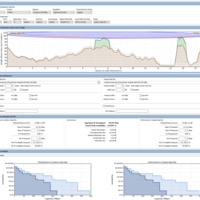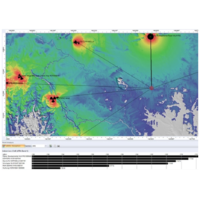4G LTE Signal Strength Reference Guide
The following indicators are used to determine the quality of a 4G LTE signal. The charts indicate rough guidelines as to what constitutes a particular level of quality, ranging from excellent to unusable.
To avoid performance issues none of these values should be in, or dip into the red. Optimal performance is achieved when all values are in the green.
Diagnosing Signal Issues
There are many reasons why signal performance can vary significantly, which is why it is important to accurately diagnose your signal issues so that the correct solution can be implemented. For more information on how to diagnose signal issues see our Guide to Understanding Poor Mobile Coverage, which contains advice that applies to mobile phones and mobile data devices. As always, proper installation of the antenna and related equipment is of critical importance and can turn a poor service into an excellent one.
RSRP - Reference Signal Received Power
The power, expressed in decibel-milliwatts, of the reference signal received from the cell tower. The reference signal is not the same signal that carries your data, but is a special, extra signal, which is exclusively used for estimating the power of the data-carrying signals coming from the cell tower, which the modem and tower use to negotiate data rates. An antenna can help you recover some RSRP, resulting in faster speeds. As always, proper installation of the antenna and related equipment is of critical importance and can turn a poor service into an excellent one.
| RSRP | Quality | Description |
| ≥ -80 dBm | Excellent | Strong signal enabling maximum data capacity |
| ≥ -90 dBm | Good | Good signal and speeds with no dropouts expected |
| ≥ -110 dBm | Fair to Poor | Fair/usable signal with possibility of dropouts and slowdowns |
| ≤ -120 dBm | Unusable | No usable signal - expect frequent disconnections and sluggish performance |
RSRQ - Reference Signal Received Quality
The quality, exrpessed in decibels, of the reference signal received from the cell tower. This is a ratio between the power of the reference signal and the rest of the signal in that current LTE band. A higher quality reference signal indicates to the UE and tower to use more sophisticated data encoding schemes, packing more data into each resource unit, because the risk of data corruption is reduced. An antenna may not help you with poor RSRQ issues, but a higher LTE category modem (e.g. Cat12) can be more resiliant under poor RSRQ conditions than lower category modems (e.g. Cat4). As always, proper installation of the antenna and related equipment is of critical importance and can turn a poor service into an excellent one.
| RSRQ | Quality | Description |
| ≥ -5 dB | Excellent | Strong signal enabling maximum data capacity |
| ≥ -8 dB | Good | Good signal and speeds with no dropouts expected |
| ≥ -10 dB | Fair to Poor | Fair/usable signal with possibility of dropouts and slowdowns |
| ≤ -20 dB | Unusable | No usable signal - expect frequent disconnections and sluggish performance |
SNR - Signal to Noise Ratio
This is the ratio of interfering noise to the actual signal you are using. The higher the ratio, the louder and clearer your signal can be "heard" over all the background noise, leading to better performance. While it is possible for our modems to transmit some data in a negative signal to noise ratio you will certainly not find it to be the best experience, which is why recommend keeping it above 0 dB, which represents the signal and noise levels being equal to one another. As always, proper installation of the antenna and related equipment is of critical importance and can turn a poor service into an excellent one.
| SNR | Quality | Description |
| ≥ 15 dB | Excellent | Strong signal enabling maximum data capacity |
| ≥ 10 dB | Good | Good signal and speeds with no dropouts expected |
| ≥ 3 dB | Fair to Poor | Fair/usable signal with possibility of dropouts and slowdowns |
| ≤ 0 dB | Unusable | No usable signal - expect frequent disconnections and sluggish performance |


